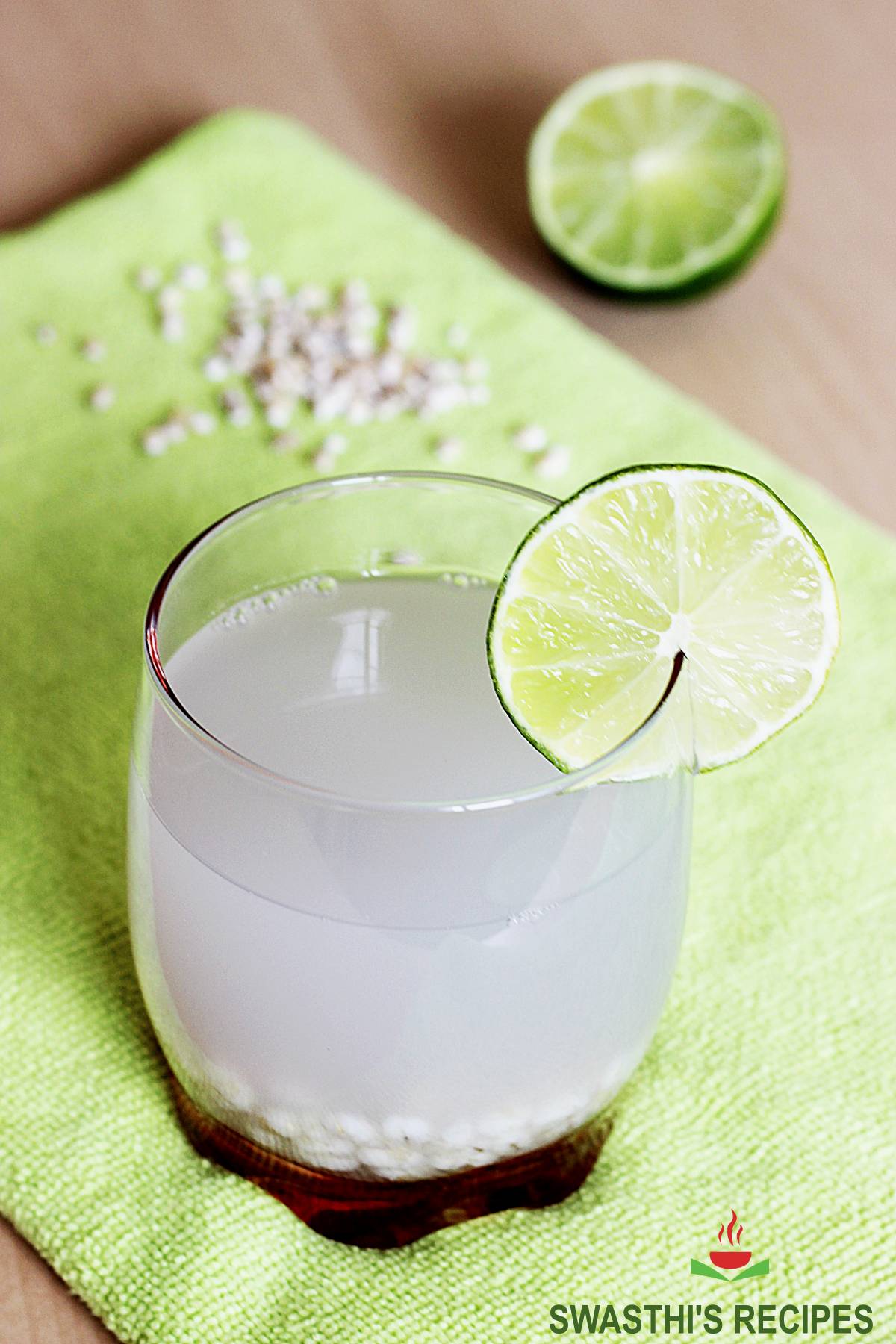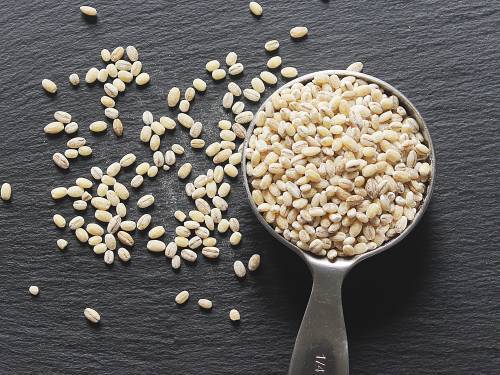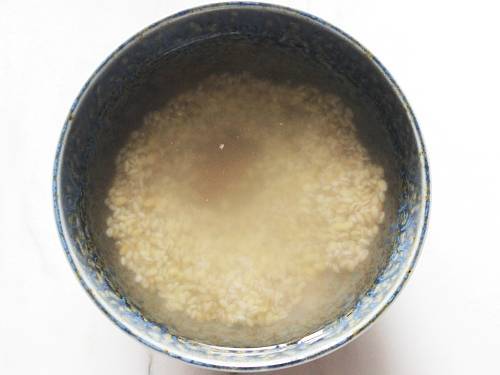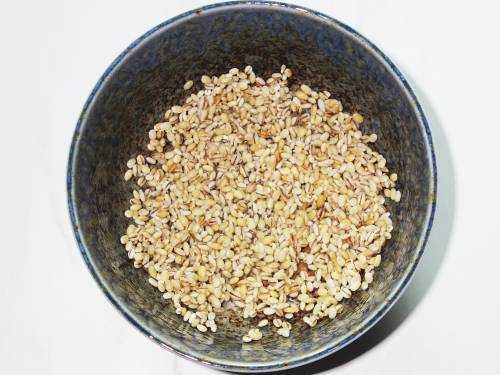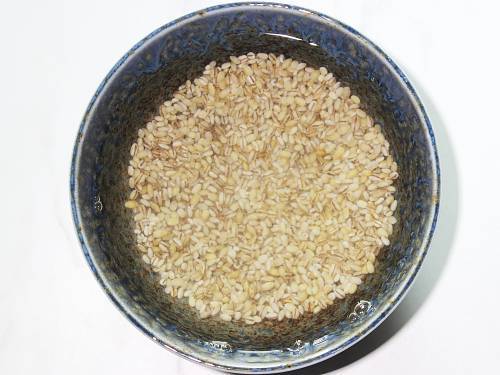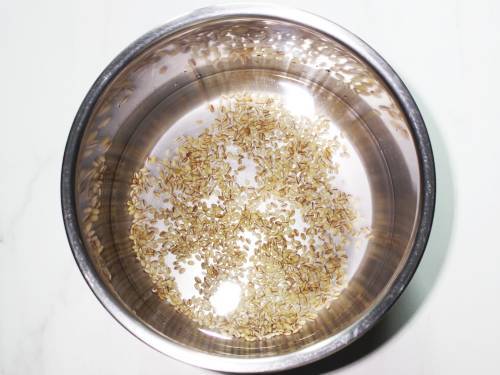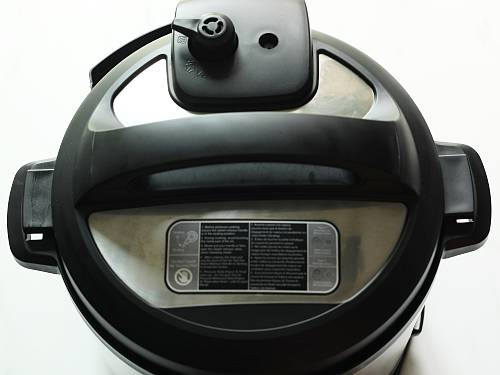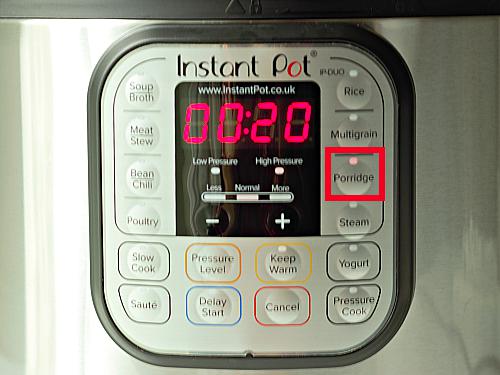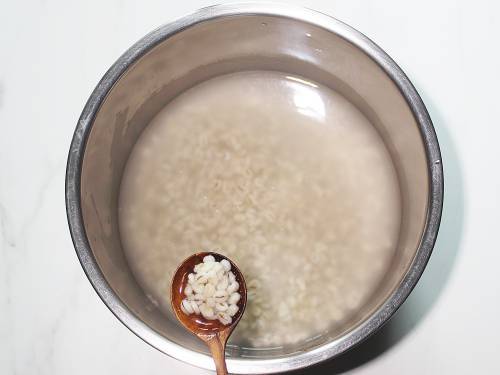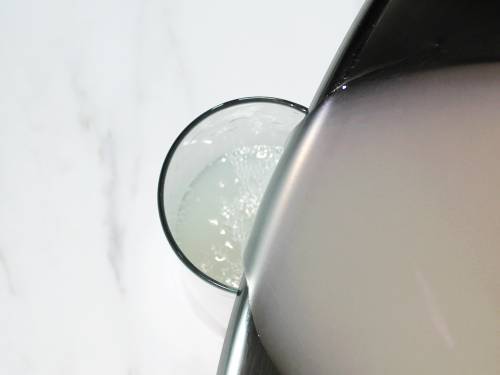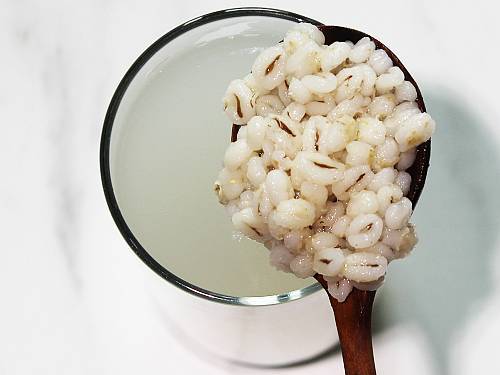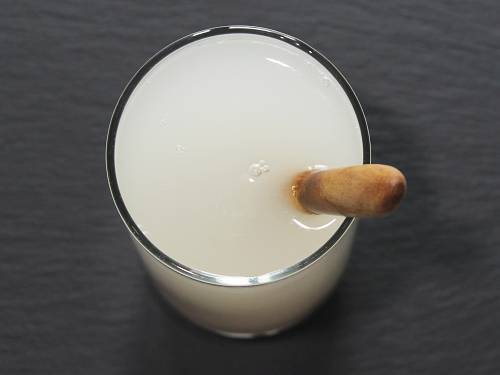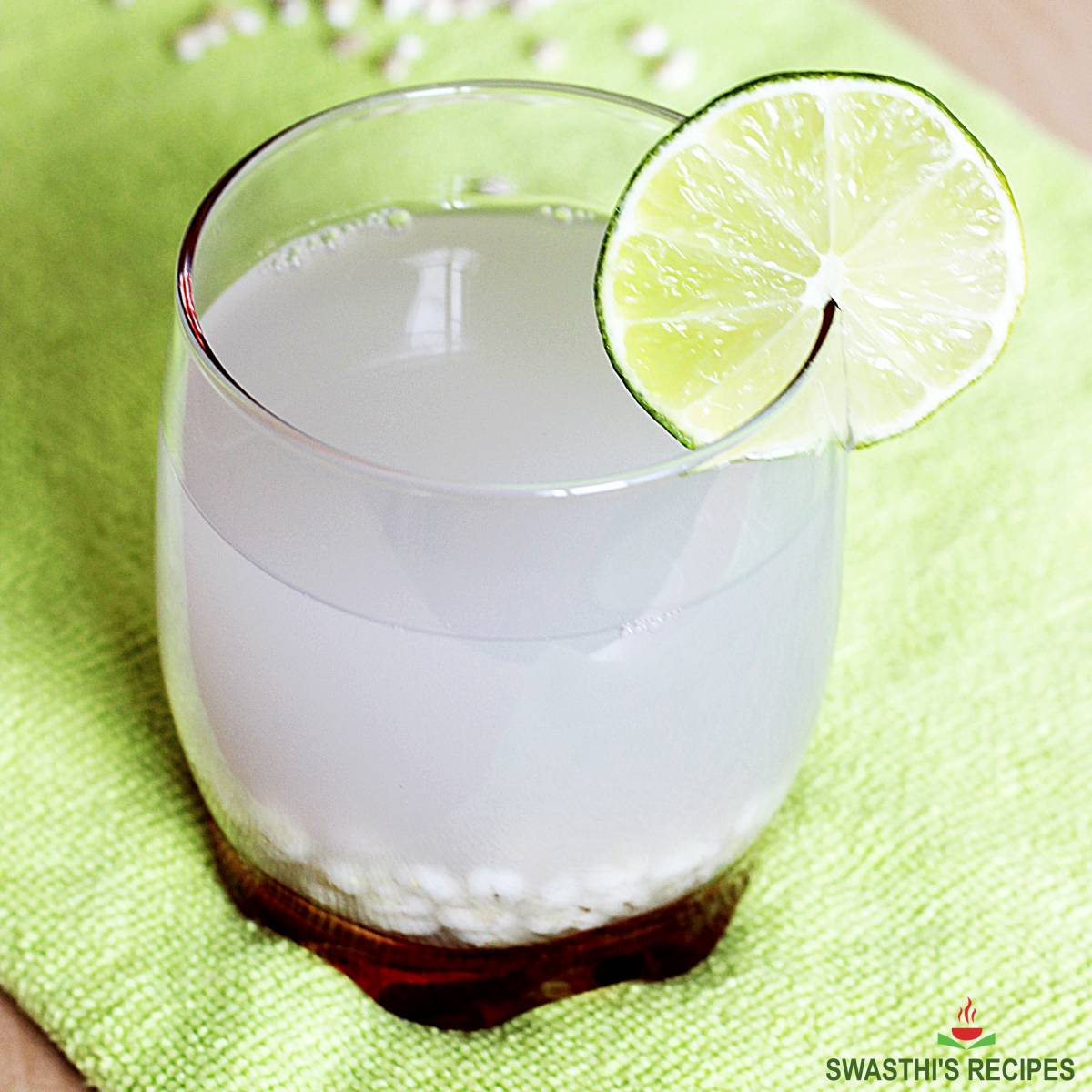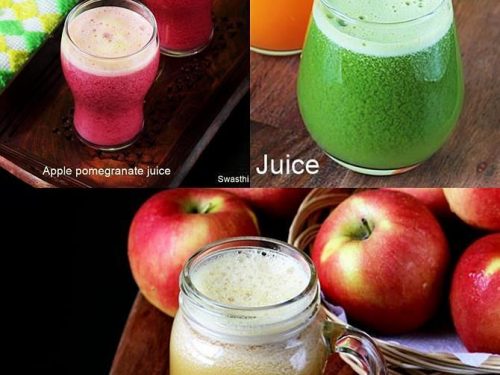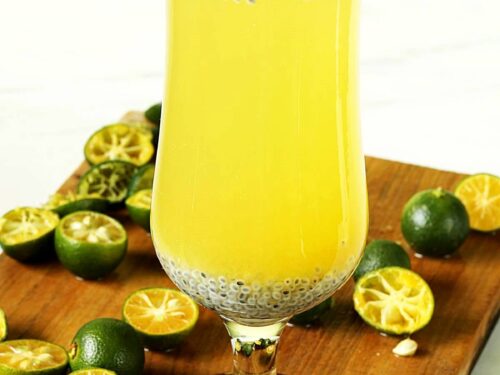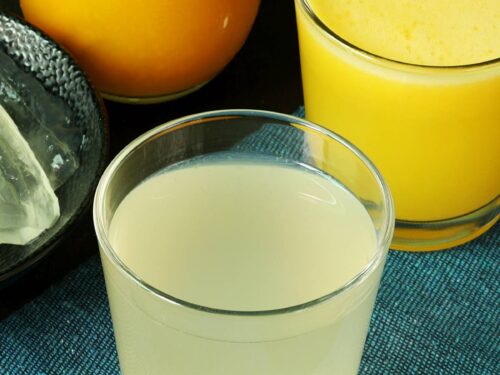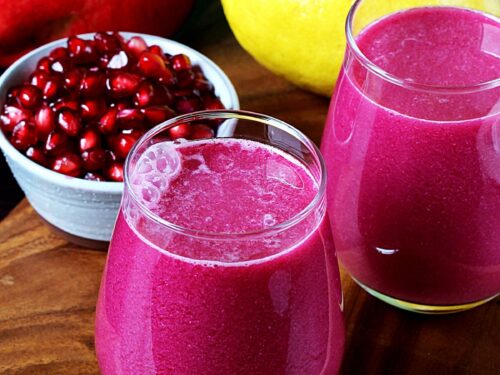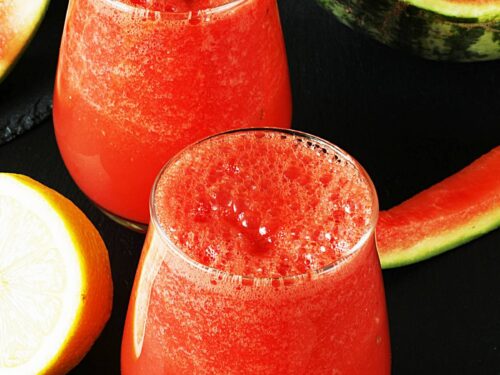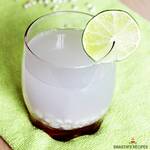That water, which may seem to some as the byproduct of cooking barley, is actually a much-desired beverage. In fact, it has a very long history as a source of nourishment. Barley was one of the earliest cultivated grains, thousands of years ago. It has been used to make various dishes like stews, soups and many more.
About Barley Water
Barley water is a healthy drink made by simply simmering barley grains in water, until most of the nutrients and the flavor is released to the water. It is a traditional drink in several cultures across the world as it is well known for the nourishing and healing properties. Chinese and Indian households have been making this for generations to beat the heat, nourish the body and to recover from illness.
Health Benefits
That being said, it is not a miraculous drink that can cure diseases but it can help the body recover faster from fever, dehydration, sunstroke, UTI, kidney stones and water retention. In India, doctors suggest drinking barley water to people suffering from kidney stones and Urinary Tract Infections due to its diuretic properties. It is also suggested to pregnant women with water retention (edema) problems. Barley water also provides us many more benefits like clearing toxins from the stomach, helps to reduce bad cholesterol there by improving the ratio of LDL & HDL. It also helps keep the skin clear as it is capable of flushing out toxins. Above all, barley water is considered to be one of the best summer drinks as it hydrates and cools the body. Here are a number of reasons to drink barley water.
It may help lower blood sugarBarley is a good source of soluble fiberIt may help with weight loss since it can detox by flushing out the toxins.It may help with balancing bacteria in the gut.Barley water may help lower cholesterol.
Store bought Vs Homemade?
In many parts of the world, barley water can be found commercially bottled. Mexico, Australia, England, and many parts of Asia have embraced this drink as a health tonic. In many places it is enjoyed as a refreshing cold drink over ice. In Singapore, barley water is the most consumed beverage due to the hot and humid climate throughout the year. It is a staple in many households & is pretty much available everywhere from cafes to hawker centers. Of course it is possible to purchase premade barley water in cans or bottles. While this is rather convenient, these versions are often sweetened and considerably more expensive than the cost of making it at home. The bottom line is that making it yourself will yield a beverage that is free of additives and preservatives. Beyond that, you are able to create a drink that suits your taste, giving you the opportunity to control the amount of sugar. You can also adjust the flavor with the addition of lemon or other aromatics that contribute great flavor and health benefits. Best of all, you can make it at home quite easily and affordably, giving you the ability to control the quality, flavor, and freshness of this amazing health drink.
Different Types of Barley
Barley is a very nutritious grain, delivering fiber and a number of nutrients that benefit the body when it is in its most natural form, with the bran intact. Through processing, the value of these nutrients can be diminished making it lower in vitamins and minerals. For that reason, it is important to choose the best barley for making barley water so you are sure to derive the greatest benefit that will make your efforts worthwhile. The following are a number of barley types, beginning with the least processed variety and moving towards those varieties that are processed and more finely milled:
Unhulled barley: These are barley grains in their most raw form, best for barley sprouts and barley tea.Hulled barley: The husk of the barley is removed, leaving the bran intact, resulting in a more digestible grain that is high in fiber, iron, and minerals.Pot barley (Scotch barley): This barley has been milled a few times leaving part of the bran intact. It is somewhat higher in fiber than pearl barley.Pearl barley: This type of barley is commonly found at grocery stores. Because some of the bran has been removed through the milling process, it is lower in nutrients and fiber. It tends to cook more quickly as a result, and has a rather mild flavor.Quick-cooking (instant) barley: This variety of barley has been partially steamed and flattened to shorten the cooking time.Barley grits: Much like corn grits, barley grits are toasted and cracked grains that are sometimes cooked in porridge or breakfast cereal.Barley flour: Barley flour is milled finely much like wheat flour. It does contain the protein called gluten, though not as much as wheat flour.
For more summer beverages, you can checkFruit juice recipesSabja seeds drink (tukumaria seeds)Aloe vera juiceDry dates juice
How to Make Barley Water (Stepwise Photos)
There are a couple of steps that go into properly preparing your barley before delving into the cooking process. It is important that you follow the process to give you the best possible outcome that will taste great and offer the best, most nutrient-rich beverage. Choosing Barley
- The first step in making barley water is selecting the grains that will give you a delicious and nutritious beverage. For this I recommend one of four options: Hulled, pot (Scotch), pearl barley or barley flour, depending on what is available at your local grocery store. Once you get your barley grains home, be sure to sort and rinse well. Much like beans, small stones or other debris may need to be removed. Sorting and Rinsing
- After you have looked over your grains for unwanted particles it is important to rinse them well. For this, it is best to have your barley in a generously sized bowl. I used ¼ cup grains. Cover them with plenty of water, rubbing and moving them around.
- Then straining. Repeat this process a few times to wash away any sediment over the barley grains. Soaking Barley
- The next step is the soaking of the grains. This is an important process that makes the barley more digestible by neutralizing something called phytic acid, resulting in a finished product that is more easily digested. Beyond that, soaking helps to break down the gluten, a hard to digest protein found in a lot of grains like barley, wheat etc. The recommendation here is at least a 7-hour soak that will yield a more nutritious and beneficial barley beverage. You can also soak them for a shorter period. This will also reduce the cook time.
Simmering
- Once you have your grains selected, sorted, and soaked you are on your way to making your own barley water.Discard the water and add the grains to a large pot or pressure cooker. Pour 3 cups of water. If you have not soaked the barley then use 4 cups water for pressure cooker and 4½ cups for pot method.
- Bring the water to a boil and simmer for about 40 to 50 minutes or until the barley is soft, tender and mushy.Instant pot: To make in the Instant pot, add the barley and water to the steel insert. Secure the lid and position the vent to sealing.
- Press the porridge button and set the timer to 20 minutes. When the pressure releases naturally, open the lid. Stove-top Pressure cooker: If making on the stovetop pressure cooker, cook for 5 to 6 whistles on a medium heat. Please be sure to use a large pressure cooker or pressure pan otherwise the barley water can overflow from the vent while pressure cooking. When the pressure drops, open the lid. I have always used a 5 liter and above cooker for this recipe.
- Once the barley is cooked, cool it down. You will see barley water being cloudy & the grains quite soft.
- All of the barley settles down at the bottom. Gently pour the water to serving glasses. You can strain it.
Flavoring & serving suggestions
In Singapore, we usually add a spoon of cooked barley and no salt or sweetener is added to the drink. We drink barley water (at room temperature) and then eat up the barley. Back home in India too my mom never added anything to barley water. It was a plain drink. Barley water has a mild nutty flavor with almost no taste. But knowing it is a health drink, you won’t mind having it plain because it tastes better than plain water. If you are consuming it for kidney stones, UTI, dehydration, fever etc, then serve it plain at room temperature without any additions, not even sweetener. If you want to add anything else consult your doctor. For kids many people add rock sugar as it is considered cooling and better than regular sugar. Also many people in Singapore add preserved winter melon. If you want to sweeten your barley water add honey, maple syrup, palm jaggery, palm sugar, coconut sugar or any other of your choice. But remember that though barley water is low in calories, it is a high carb drink so it is best to have it plain without any sweetener. If you live in colder climate, have it hot or warm. You can also add some ginger and black pepper while boiling the barley. You can also flavor it with lemon juice, calamansi juice or orange juice. Some people also add pandan leaves towards the end of boiling barley water. For this recipe you may add 1 pandan leaf. Once you have made it for yourself you will be inclined to make barley water a part of your diet.
Faqs
How to Store Barley Water
Since this is a health drink it is best made and served on the same day. Sometimes barley water turns slimy if you leave the cooked barley in the water for longer. So consider straining the water after cooling down a bit, if you want to keep it longer at room temperature. Once you have made barley water, you can keep it in your refrigerator for a day or 2. Great to make ahead, it is nice to have on hand so that you can enjoy it for a hydrating beverage any time of the day. But if you are trying to recover from illness, make and consume it fresh.
Making barley water with flour
Some people prefer to make barley water with readily available flour since there is no wastage, cost effective and it can be prepared quickly. However the nutrition level of the barley water made with flour is different. If you prefer to make barley water with flour, use super fine flour. Mix 1 teaspoon flour with 1 ¼ cups water and boil on a medium heat until it reduces to 1 cup. Strain it and drink. It will be like a thin porridge. Related Recipes
Recipe Card
